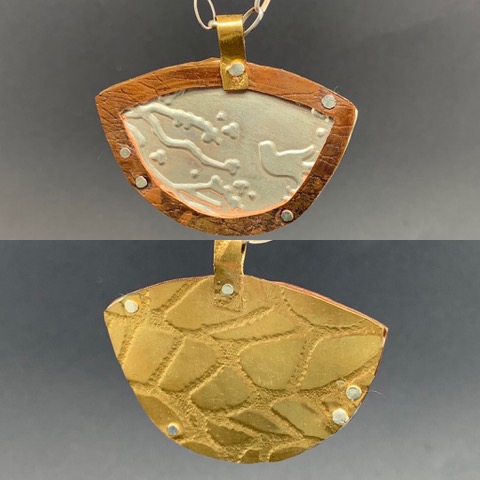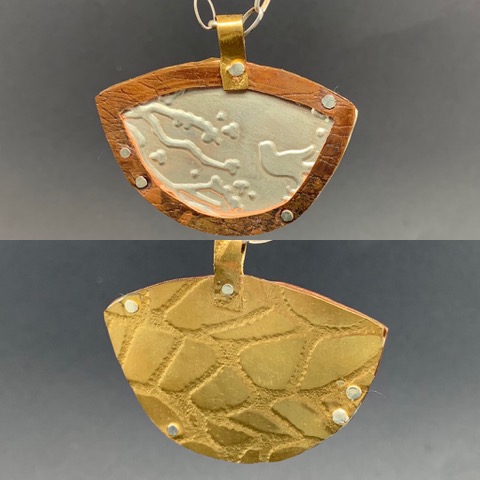
Copper, Bronze, and Brass Jewelry
Copper History Facts
1. Cookware
From traditional jam pans to the cutting-edge casserole dishes used by Michelin-starred chefs, copper cookware offers superior heat conductivity. This guarantees a consistent temperature therefore limiting thermal inertia in order to give the best results every time.
2. Painting
Beginning in the early 16th century, painting on sheets of copper was common amongst European artists including Leonardo da Vinci, El Greco and Rembrandt. They found that copper provided a smooth, durable surface that held the paint well and gave a smooth, luminous finish.
3. Recycling
It has been estimated that at least 65% of all copper ever mined is still in use, or available for use, today, having been recycled over and over. Copper’s ability to be recycled repeatedly, without any loss in performance, is an important sustainable benefit.
4. Copper In Our Daily Lives
Practically all of our electronics contain copper, from smartphones, to computers, to televisions, to cell phones. So do our household appliances: refrigerators, washing machines, dryers, microwaves, and dishwashers all contain copper wiring.
The U.S. Geological Survey (USGS) estimates that every American born in 2008 will law 1,309 pounds of copper during their lifetime for necessities, lifestyles and health.
Copper is Antimicrobial
5. Copper Is Antimicrobial!
The surfaces of copper and its alloys, such as brass and bronze, are antimicrobial. They have an inherent ability to kill a wide range of harmful microbes (germs) rapidly – often within two hours or less – and, with a high degree of efficiency. Bill Keevil, University of Southhampton, The conversation, UK.
Importantly though, you must have at least 65% of the metal to be copper to achieve the antimicrobial status. (Zaleskim Andrew, As hospitals look to prevent infections, a chorus or researchers make a case for copper surface, STAT, September 24, 2020). What this means for you, is that copper filled or coated jewelry does not qualify as antimicrobial. It simply does not have enough copper to qualify.
6. Why Do Hospitals Not Use Copper?
Dr. Salgado, is an Associate Professor of Medicine, hospital epidemiologist, and Medical Director for Infection Prevention at the Medical University of South Carolina (MUSC) in Charleston. He states that copper is rarely used in hospitals today because molded plastics and stainless steel are less expensive and easier to mass-produce. However, here in the greater Vancouver area of B.C. there are studies happening for the use of copper in our hospitals, buses and sky trains due to the COVID-19 pandemic.
Copper Alloys In Jewelry
7. Copper Alloys: Brass and Bronze
Two of the best-known alloys are Brass (copper and zinc) and Bronze (copper and tin). Bronze is harder than pure copper. It is harder than pure iron and more resistant to corrosion. Bell metal, which sounds so beautiful when struck, is made of bronze.
8. Copper and Gold
Pure gold is so soft that you can shape it with your hands, which is why most gold jewellery is actually a mixture of gold, silver and copper. In Europe, it was forbidden to alloy gold with metals other than silver and copper up until the 19th century. Even twenty-four carat gold contains copper!
Copper Jewelry
9. Is Wearing Copper Jewelry Safe?
Pure gold is so soft that you can shape it with your hands, which is why most gold jewellery is actually a mixture of gold, silver and copper. In Europe, it was forbidden to alloy gold with metals other than silver and copper up until the 19th century. Even twenty-four carat gold contains copper!
10. Is It Bad If Copper Turns My Skin Green?
The color change occurs as a normal reaction to the prolonged copper exposure on the skin, typically caused by oxidation. This just means that copper reacts naturally with our salty skin, which happens whenever we sweat.
11. Copper Reacts To Acidic Environments
The green color fades when you stop wearing the copper, and it is not harmful to your health. But copper can also react to acidic environments- and your body acidity is related to your diet. Junk food, processed food, and lots of red meat will make your body acidic.
12. How Do You Keep Copper From Turning Your Skin Green?
To prevent your skin from turning green, you can coat your jewelry with clear nail polish. You will need to reapply the nail polish occasionally, as it will wear off.
13. Can You Shower With Copper Jewelry?
Yes! In fact, the warm water may help keep your copper jewelry clean.
14. What Is The Best Way To Clean My Copper Jewelry?
I recommend cleaning copper with an old standby: vinegar.
- Mix 1/4 cup salt, 1/4 cup flour, and enough vinegar to make a thick paste.
- Use a soft cloth or sponge to rub the paste on the surface of the copper. Some people say to soak the item, but I find that the paste is faster and works better.
- Buff the copper item until it shines.
- Rinse with warm water and dry thoroughly.
15. Why Do Copper Bracelets Turn Black?
The chemical reaction between copper, oxygen and airborne sulfur creates a film of copper oxide and copper sulfide on the surface of the bracelet. As the film gets thicker, the color of the copper darkens slowly from orange-red to brown, black and eventually bluish-green.



Recent Comments